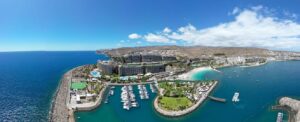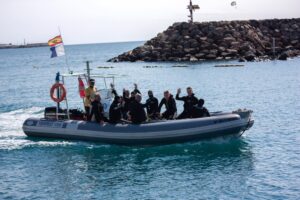Safe Zone from Anfi Beach
New safe zone between Anfi Beach and Patalavaca Recently the government, in collaboration with Anfi Del Mar, has created a new safe zone stretching from Anfi beach to Patalavaca. In the area only swimmers are allowed, no propulsion based boats can enter this zone. The protected area stretches for little over 2000 meters. The Safe […]
 Gran Canaria, een van de prachtige Canarische Eilanden, staat bekend om zijn betoverende landschappen en zonovergoten stranden. Het zuiden van het eiland kent dan ook 360 dagen zon per jaar. Kerst vieren op het strand met 26°C is geen uitzondeling.
Wat veel mensen niet weten, is dat het zuidelijke deel van het eiland een fascinerende onderwaterwereld herbergt, perfect voor duikliefhebbers die op zoek zijn naar avontuur en ontdekking. En, als Nederlandstalige duikschool, biedt Scuba Sur je ondersteuning in je eigen moedertaal!
Gran Canaria, een van de prachtige Canarische Eilanden, staat bekend om zijn betoverende landschappen en zonovergoten stranden. Het zuiden van het eiland kent dan ook 360 dagen zon per jaar. Kerst vieren op het strand met 26°C is geen uitzondeling.
Wat veel mensen niet weten, is dat het zuidelijke deel van het eiland een fascinerende onderwaterwereld herbergt, perfect voor duikliefhebbers die op zoek zijn naar avontuur en ontdekking. En, als Nederlandstalige duikschool, biedt Scuba Sur je ondersteuning in je eigen moedertaal!


